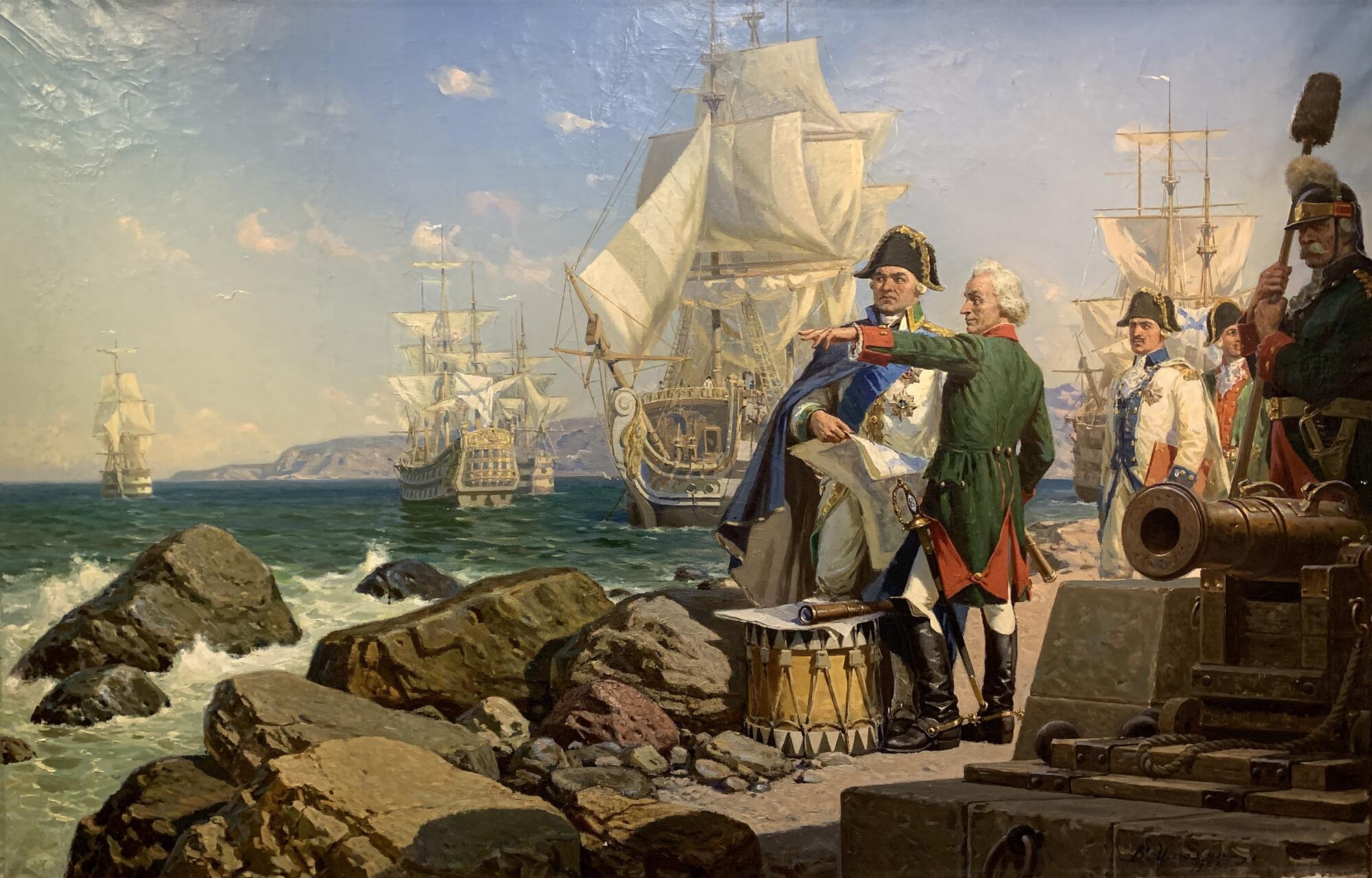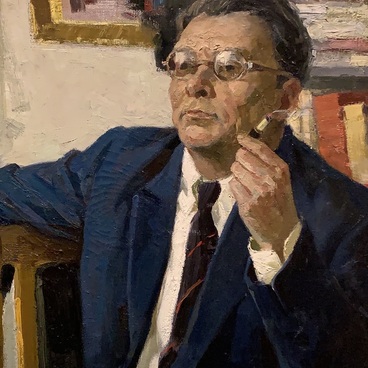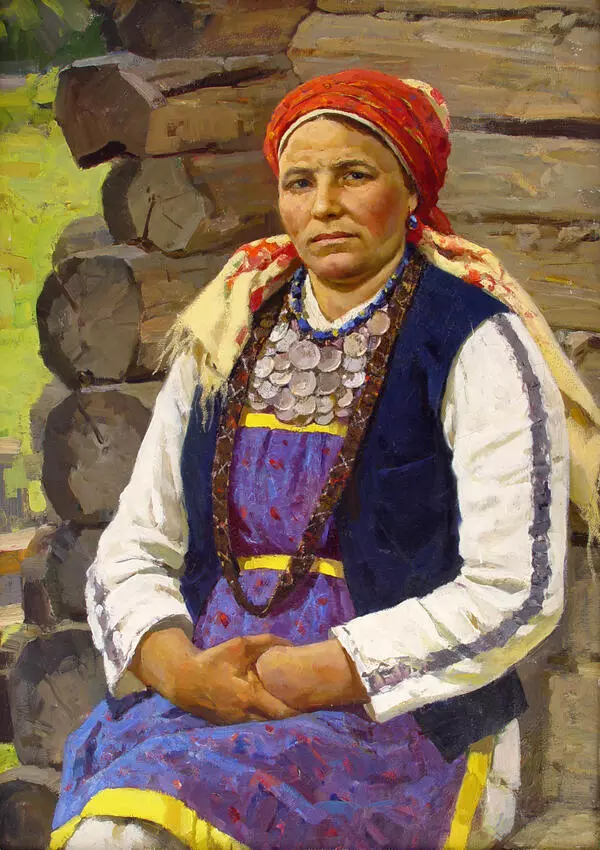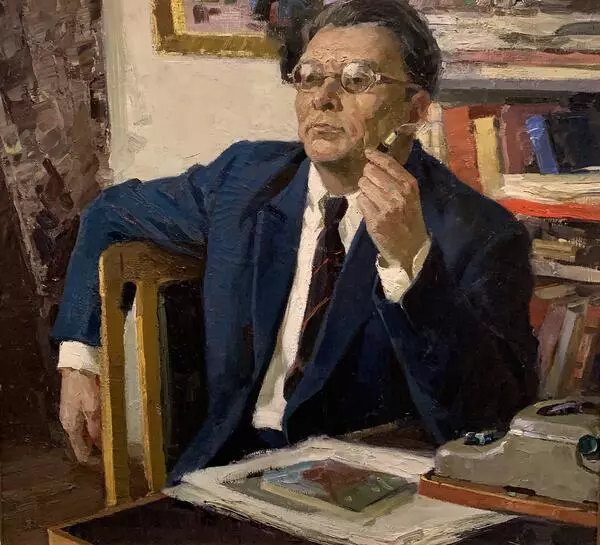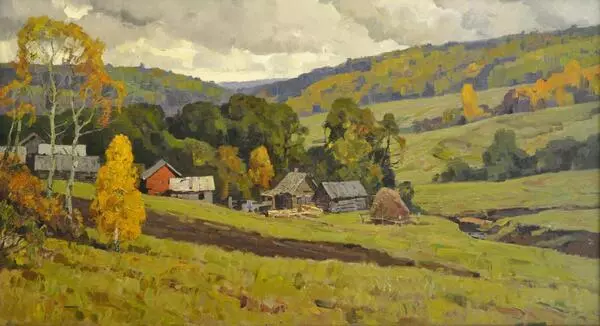People’s Artist of the RSFSR and the Mordovian Autonomous Soviet Socialist Republic, Vladimir Dmitrievich Ilyukhin was a veteran of the Great Patriotic War. He participated in the capture of Berlin, and was awarded orders and medals for distinguished military service. The artist was fully aware of the price of victory. Vladimir Ilyukhin did not address specific events of the Great Patriotic War in his art, as the emotions were still raw and overwhelming. However, the patriotic feeling of the young painter was manifested in the 1952 large-scale history painting “Meeting of A.V. Suvorov and F.F. Ushakov in Sevastopol”. The museum houses the author’s version made in 1953.
The artist conveys his resolute sense of pride in Russian military valor by depicting the events and images of Russia’s glorious past. The plot is based on the event of the Russo-Turkish War of 1787–1792, which resulted in the Russian annexation of Crimea.
The canvas shows the meeting of two legendary commanders held in Sevastopol — Alexander Vasilyevich Suvorov and Fyodor Fyodorovich Ushakov, who never lost a single battle neither on land nor at sea. Their figures and gestures are full of courage, bravery, and victorious greatness.
The artist focuses particularly on the image of Fyodor Ushakov as a national hero, whose fate was directly connected with the Mordovian land: the admiral spent the last years of his life in a manor in the village of Alekseevka near the town of Temnikov and was buried in the Sanaksar Monastery.
The artist incorporates the sense of victory into the composition and color palette of the painting. Bright waves beat against the rocks, white sails on ships billow with the wind of freedom, the boundless expanse of the sea turns bluer on the horizon, and the high blue sky with a soaring seagull symbolizes a happy future.
When creating the canvas, Vladimir Dmitrievich Ilyukhin worked a lot at the Russian State Military History Archive in Moscow, the Black Sea Fleet History Museum in Sevastopol and the State Memorial Museum of Alexander Suvorov in Leningrad.
The artist created numerous studies and meticulously detailed the weapons, clothing, landscape, and ship equipment. The painter accurately depicted the genuine personal belongings of Suvorov and Ushakov in the painting — the Generalissimo’s saber and the admiral’s telescope, as well as their orders.
Immediately after the painting had been finished, its reproductions were seen all around the Soviet Union, while the artist became famous overnight. The canvas does not lose its relevance in the 21st century. In it, we feel the inextricable connection between the best national traditions, the heroism of the Russian character and the strength of the Russian spirit.
The artist conveys his resolute sense of pride in Russian military valor by depicting the events and images of Russia’s glorious past. The plot is based on the event of the Russo-Turkish War of 1787–1792, which resulted in the Russian annexation of Crimea.
The canvas shows the meeting of two legendary commanders held in Sevastopol — Alexander Vasilyevich Suvorov and Fyodor Fyodorovich Ushakov, who never lost a single battle neither on land nor at sea. Their figures and gestures are full of courage, bravery, and victorious greatness.
The artist focuses particularly on the image of Fyodor Ushakov as a national hero, whose fate was directly connected with the Mordovian land: the admiral spent the last years of his life in a manor in the village of Alekseevka near the town of Temnikov and was buried in the Sanaksar Monastery.
The artist incorporates the sense of victory into the composition and color palette of the painting. Bright waves beat against the rocks, white sails on ships billow with the wind of freedom, the boundless expanse of the sea turns bluer on the horizon, and the high blue sky with a soaring seagull symbolizes a happy future.
When creating the canvas, Vladimir Dmitrievich Ilyukhin worked a lot at the Russian State Military History Archive in Moscow, the Black Sea Fleet History Museum in Sevastopol and the State Memorial Museum of Alexander Suvorov in Leningrad.
The artist created numerous studies and meticulously detailed the weapons, clothing, landscape, and ship equipment. The painter accurately depicted the genuine personal belongings of Suvorov and Ushakov in the painting — the Generalissimo’s saber and the admiral’s telescope, as well as their orders.
Immediately after the painting had been finished, its reproductions were seen all around the Soviet Union, while the artist became famous overnight. The canvas does not lose its relevance in the 21st century. In it, we feel the inextricable connection between the best national traditions, the heroism of the Russian character and the strength of the Russian spirit.
